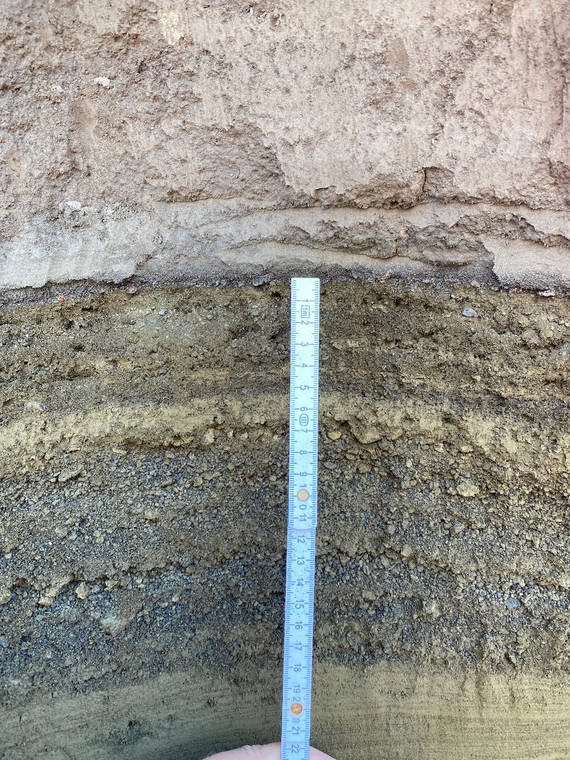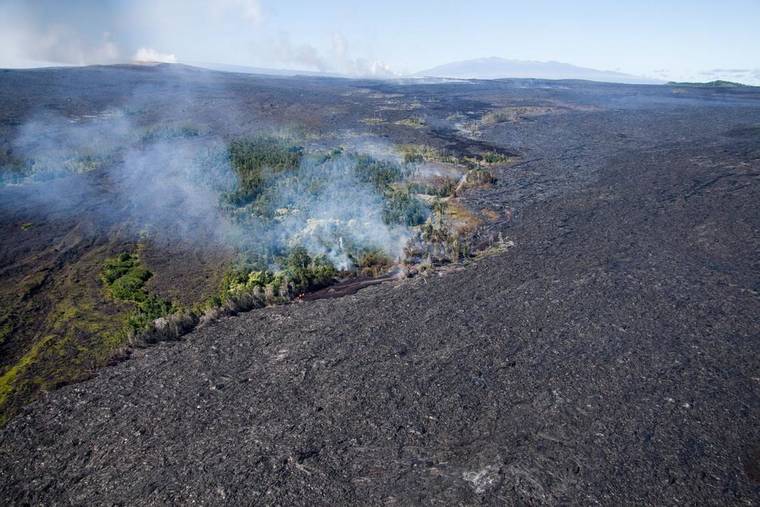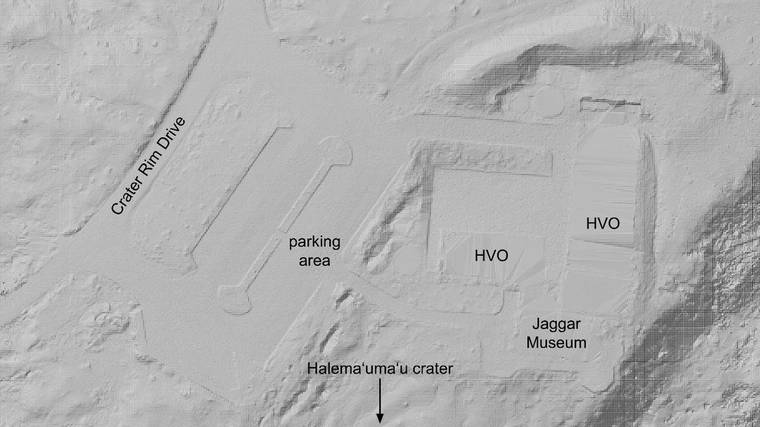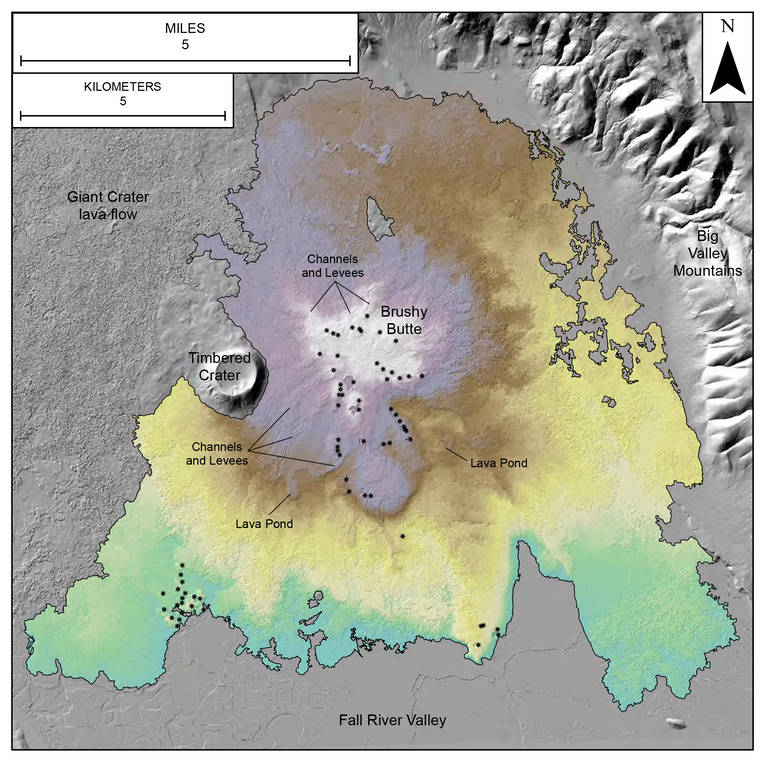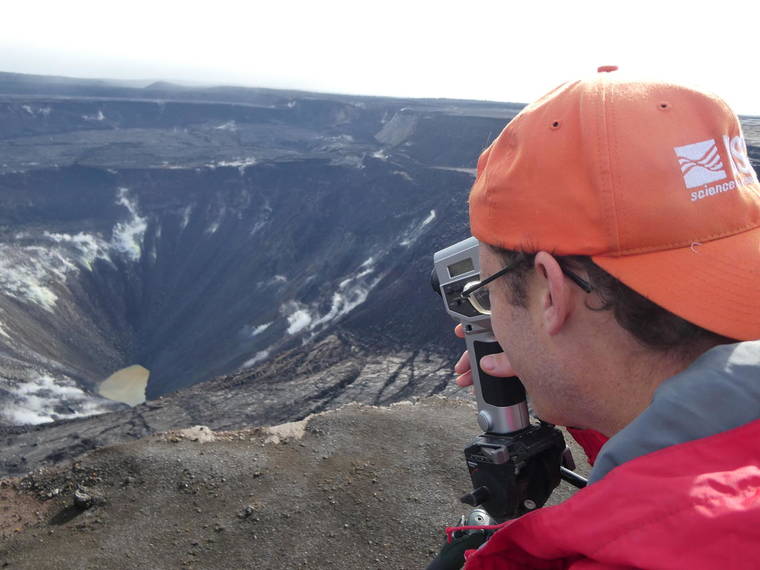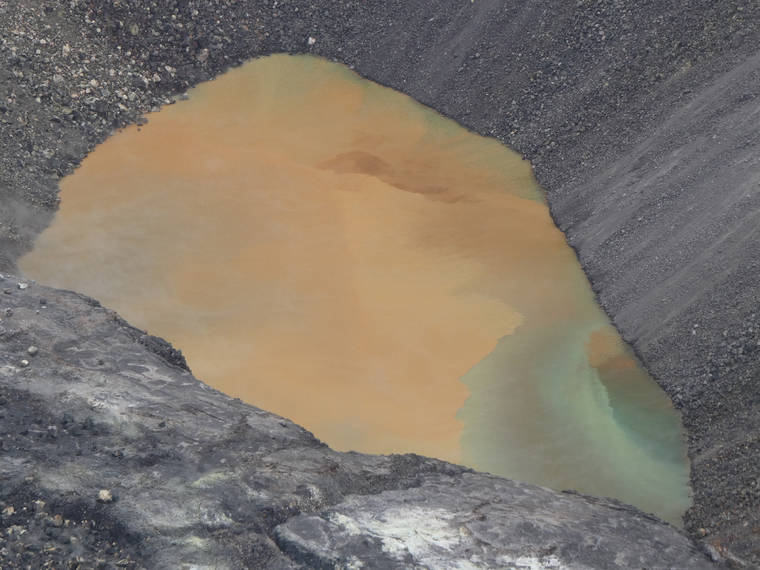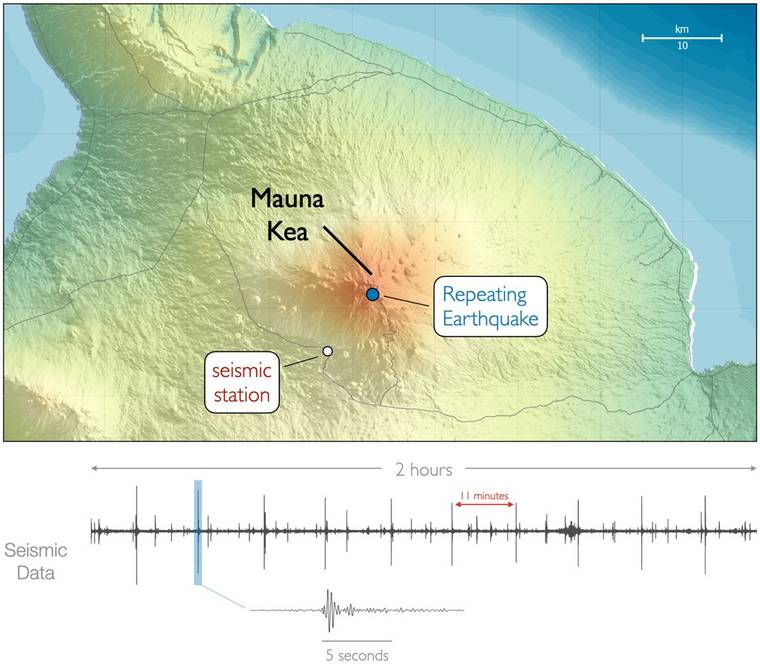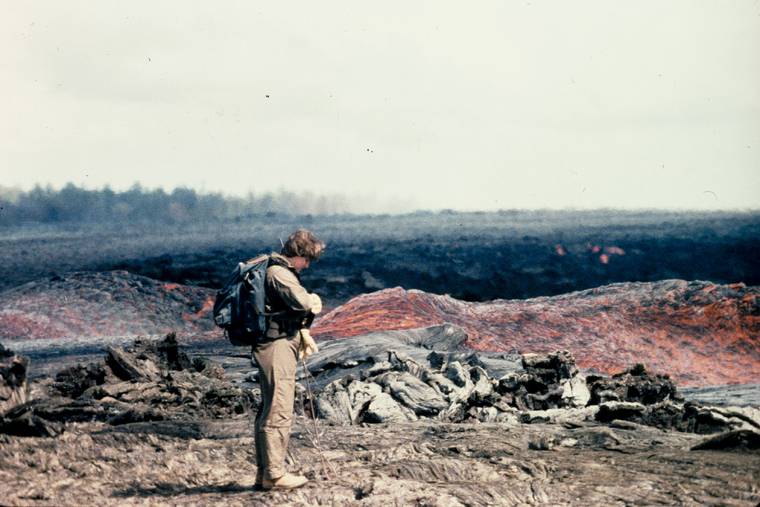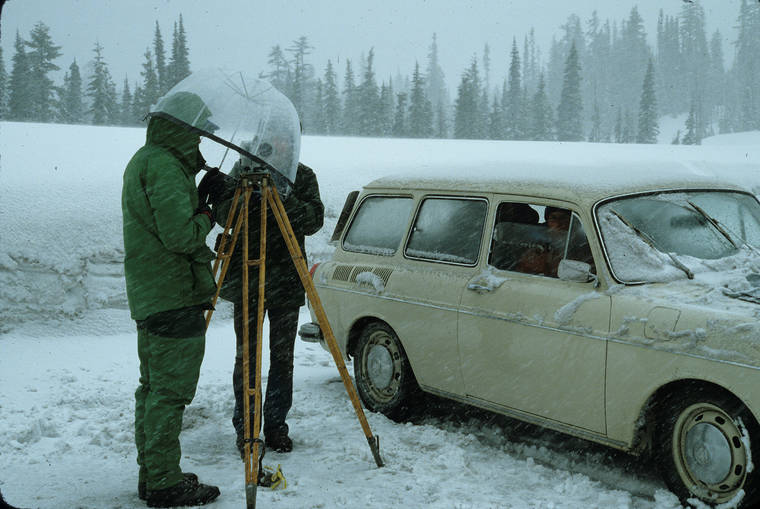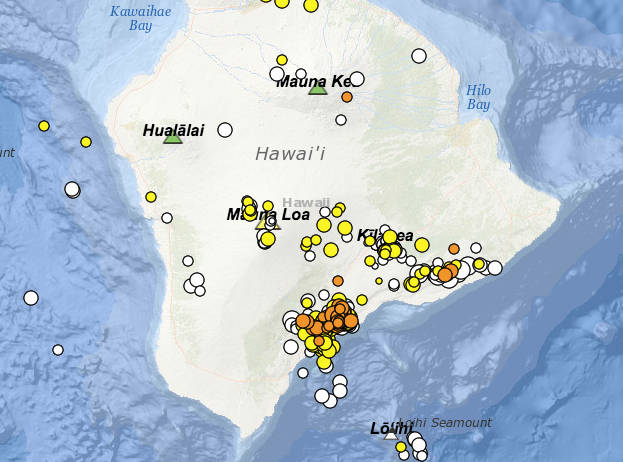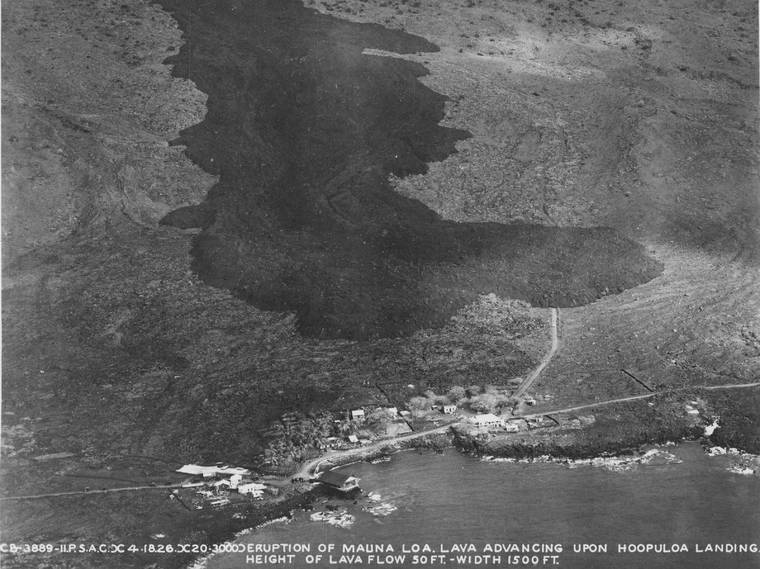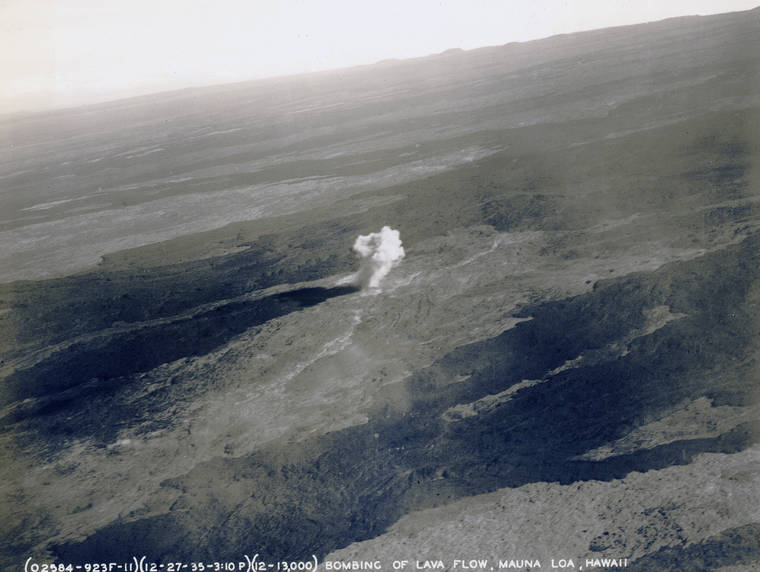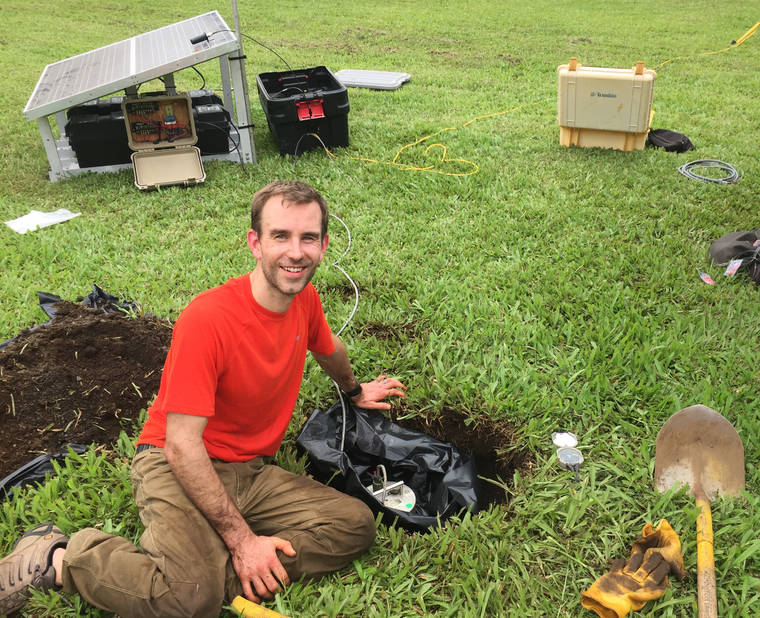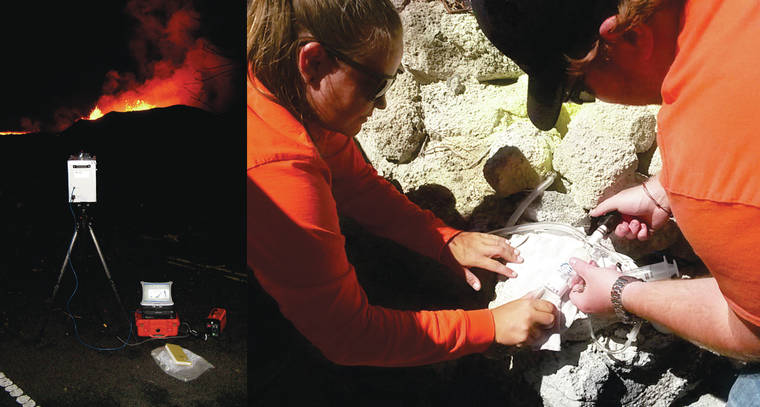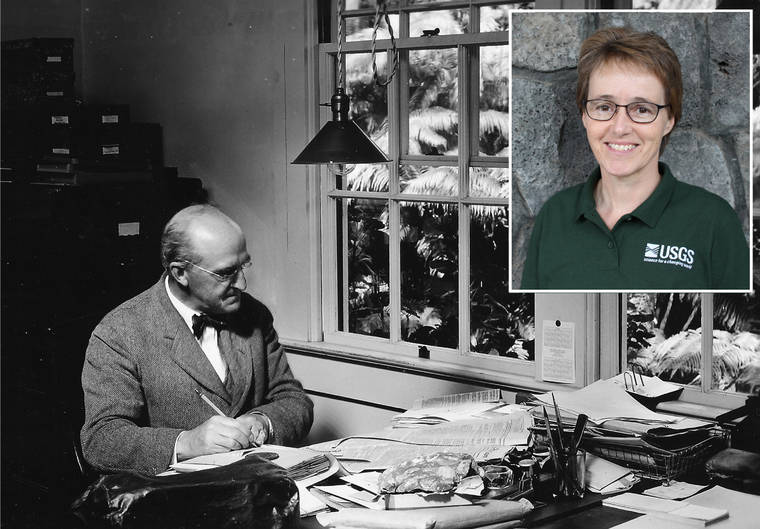Volcano Watch: When rocks fly
Tephra is the Greek word for ash, and it is the label we use for rocks that come flying out of the volcano during an eruption. Every feature of every single tephra grain has something significant to say about the volcanic process that created the grain and the transport journey it took afterward.
Volcano Watch: Remembering the Thanksgiving Eve Breakout from 2007
While this scenario describes the highly destructive 2018 eruption on the lower East Rift Zone (LERZ) of Kilauea, it also pertains to an earlier event on the East Rift Zone: the Thanksgiving Eve Breakout (TEB) lava flow in 2007.
Volcano Watch: How has topography been modeled at Hawaii’s volcanoes?
Modeling topography on active volcanoes is unlike doing so in any other setting, because dramatic changes can occur on timescales far shorter than a human lifetime. For example, in 2018 at Kilauea, approximately 1 cubic kilometer of rock volume (0.25 cubic miles) was lost at the volcano’s summit and deposited on the lower East Rift Zone. So, topographic models can become outdated relatively quickly, and we need to update them accordingly.
Volcano Watch: Using Hawaiian eruptions to understand volcanism in northern California
The U.S. Geological Survey has five volcano observatories tasked with monitoring low to high threat volcanoes throughout the United States.
Volcano Watch: Innovative monitoring of Kilauea’s summit water lake
Famous for glowing red lava and billowing volcanic plumes, Halemaumau has long inspired poets, painters and photographers to find meaning in the color and light of this dynamic landscape.
Seismic Swarms and Sulfur Smells: What is Happening at Kilauea Volcano?
On the evening of Thursday, Oct. 22, people living near the summit of Kilauea Volcano began to feel a series of earthquakes. They were small, and some could even be mistaken for a strong gust of wind blowing against the house.
Charcoal, a game changer for understanding processes in young volcanic terranes
One of the fundamental premises of geology is that the “key to understanding the future is to understand the past.” In order to forecast how a volcano will behave, geologists must map the deposits from past eruptions and determine the ages of those deposits. Radiocarbon dating is our principal tool of use.
Volcano Watch: HVO camera network reconfiguration and upgrades coming soon
Over the past two decades, the USGS Hawaiian Volcano Observatory (HVO) has set up a camera network system to monitor visual changes at Kilauea and Mauna Loa volcanoes. This network was designed for the volcanic activity of the time and captured the two long-lived eruptions of Kilauea at the summit and East Rift Zone up close.
Volcano Watch: Kilauea Volcano’s summit water lake is 1 year old
On July 25, 2019, ponded water was first observed within Halemaumau at the summit of Kilauea Volcano. Over the past 12 months, the USGS Hawaiian Volcano Observatory (HVO) has watched this amazing body of water grow from a nascent pond into a veritable lake, the first observed within Kilauea caldera in at least 200 years.
Volcano Watch: Deep repeating earthquakes beneath Maunakea
Maunakea volcano hasn’t erupted in over 4,500 years, but that doesn’t mean it’s quiet. In fact, for decades it has been hiding one of the most unique seismic signals seen at any volcano.
Volcano Watch: Electronic ‘doctor’ tracks health of monitoring stations
As part of Volcano Awareness Month earlier this year, “Volcano Watch” featured five articles focused on different roles at the USGS Hawaiian Volcano Observatory (HVO). These articles described the roles of “geodesist,” “Scientist-in-Charge,” “gas geochemist,” “seismologist,” and “geologist.” This month, we continue that series, focusing on the role of “technician.”
Volcano Watch: Extraordinary tenure ends for leader of Hawaiian Volcano Observatory
The extraordinary leadership of Tina Neal as Scientist-in-Charge (SiC) of the USGS Hawaiian Volcano Observatory (HVO) comes to an end this week, when she returns to the alaska Volcano Observatory after fulfilling her five-year commitment to HVO. David Phillips, HVO’s Deputy SiC, will take the helm until Tina’s successor arrives.
April 1980 was a month to remember at Mount St. Helens
Mount St. Helens was exploding! The first eruption in the Cascades since 1914-17 (Lassen Peak) started on March 27, 1980. April became a frenzied, exciting, challenging, sometimes frustrating, once-in-a-lifetime experience for several scientists with experience at the U.S. Geological Survey (USGS) Hawaiian Volcano Observatory (HVO), called on to measure the deforming volcano.
Nearly 6,000 small, deep earthquakes recorded near Pahala since August 2019
Nearly 6,000 earthquakes have been recorded in the past eight months beneath Kilauea’s lower Southeast Rift Zone near Pahala in Ka‘u.
Volcano Watch: HVO looks to the past to better understand future Mauna Loa eruptions
Mauna Loa, the largest active volcano on Earth, has erupted, on average, every 5–6 years during the past 3,000 years.
Old bombs found on Mauna Loa: The rest of the story (Part 2)
Last weeks Volcano Watch provided details of events leading up to the dropping of bombs on a Mauna Loa lava flow on Dec. 27, 1935. Heres the rest of the story.
Endangered plant survives volcanic hotspot, but is challenged by invasive species
Portulaca sclerocarpa (also known as Ihi makole) is a critically endangered small succulent plant in the purslane family (Portulacaceae). It only occurs on Hawaii Island and on a small islet off the coast of Lanai. It can be found in various sites in Hawaii Volcanoes National Park, including the Puhimau thermal area.
People and jobs at HVO, Part 3: The shaky work of HVO seismologists
When I was 7 years old, I won my countys earthquake safety poster contest. I remember going to a special award luncheon with the mayor, who complimented my work and gave me an Earthquake in a Can toy. Little did I know how much that event would influence my life.
Volcano Watch: HVO people and jobs, Part 3 — Geochemistry
As many residents of the island of Hawaii can attest, volcanic gases can stinkliterally. But for those of us at the USGS Hawaiian Volcano Observatory (HVO) who are lucky enough to study those gases, our jobs are actually pretty amazing.
Who and what is the scientist-in-charge?
Todays article, written by HVO Scientist-in-Charge Christina (Tina) Neal, is the second in a series of articles about HVO people and jobs during Volcano Awareness Month 2020. Next week, another HVO team will write about its work.

